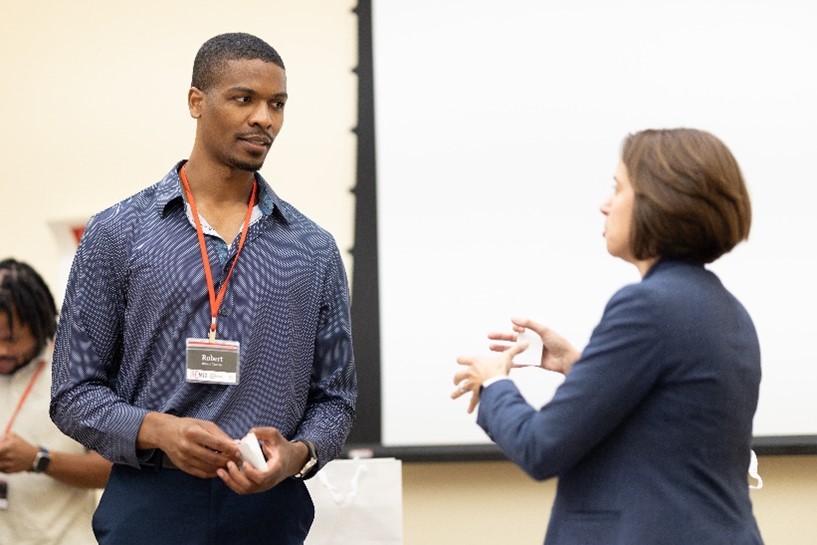
Strategic Communications Planning is Vital for Organizational Success
I recently returned to my alma mater, Denison University, to attend its ReMix Summit, an annual alumni conference and series of networking events designed to help foster meaningful connections and provide a platform to share ideas.
ReMix 2023’s selected speakers included Atomic Habits author James Clear (’08), executive leaders, startup founders and yours truly. My first thought: “Wow, that’s a serious lineup.” My second: “Wow, that’s a serious lineup…what am I going to bring to the conversation?”

In anticipation of the conference, I became laser-focused on crafting the best session possible. I spent hours preparing my talking points and developing my facilitation guide. I researched attendees and other speakers and identified key themes that would resonate with them.
But as it turned out, my takeaways from the experience were less about what I said and more about what I learned.
At the conference, Denison alumni shared personal stories, thought-provoking ideas and a range of perspectives about life, impact and personal success—and what it’s like to juggle aspirations in each. A defining moment for me was during leadership consultant Jason Barger’s session when he proclaimed the profundity, “Where you look is where you go.”
Hold up. Record scratch. Rewind. What does that even mean?
Well, there are a lot of ways to interpret it: literally, figuratively, metaphysically. However, my takeaway was that strategy and planning are essential in advancing toward our goals. If you don’t have a roadmap to success, how will you know when you get there? I was reminded of the principles of strategic communications planning I’ve learned while at PCI.
The Value of Strategic Communications Planning
Strategic communications planning is integral to PCI’s approach. As a communications agency, we help organizations define who they are, their unique value propositions and how audiences should perceive them. It isn’t just about writing social media copy or press releases; it’s about designing a tailored and strategic guide to achieve specific, measurable outcomes.

So, what does this roadmap look like, you might ask? There’s not a definitive formula, but the great plans I’ve been a part of include key elements:
- Target audiences (external and internal, including stakeholders)
- Key messages to engage each audience, which establish voice and brand position
- Clear and achievable goals
-
- Ex: You want to strengthen your nonprofit organization’s revenue
- Quantifiable Objectives
- Ex: Increase donations to your nonprofit by 15% in 2024
- Strategies
- Ex: Leverage milestone events to mobilize specific audiences to contribute small donations
- Tactics
- Ex: Launch a small donation campaign counting down to your organization’s 15th anniversary
- Ex: Partner with a community-based artist to host a raffle allowing select participants to win artist merchandise
This is only one example, but a good plan will outline your goal(s), provide actionable steps to achieve it and clarify how you will measure success. Functioning without these would be like driving to a destination you’ve never been, without a roadmap or GPS to guide you. And that’s the easiest way to wind up lost.
All Things Considered
There is a caveat: Sometimes, things in the communications world move quickly. Sometimes, they move so quickly that it’s hard to understand the why of a particular effort. Perhaps we’re reacting to a situation and all the work we did to proactively strategize seems moot.
Remember: Where you look is where you go.
Keeping your eyes on the destination helps align every decision toward a strategic outcome, which makes your efforts more impactful. Also, planning makes challenging decisions easier by providing structure and a clear way to assess how your decisions coincide with your values and goals.
Success Begins at the Foundation
I returned from ReMix and thought deeply about what it means to drive meaningful impact with PCI clients. I thought about how my colleagues and I continue to elevate our support for organizations by going deeper to understand their goals—not just in the short term, but in the long run, and not just from a communications perspective, but from a business sustainability and growth perspective.
It all begins with prioritizing planning as the foundation of our partnerships to help organizations establish a clear pathway to success by defining who they are, where they’re headed and what it will take to get there.


